Ep. 113: The Best of Season 4
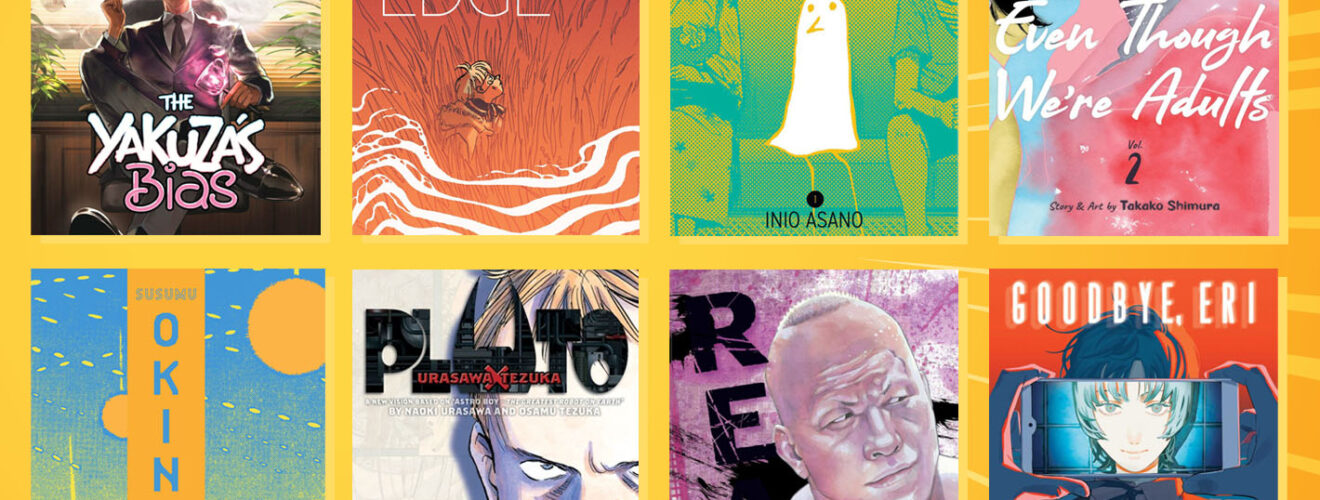
What a season it’s been! Lasting basically the entirety of 2023, we covered a ton of great manga, from the popular anime-fueled hits of the day to the obscure and wonderful titles hiding on shelves across the world. So what were our faves? What are the manga for YOU, the person who doesn’t read much manga? Listen on and find out!
Stats on the season, show notes, and so much more at mangasplaining.com. And don’t miss our manga publishing newsletter at mangasplainingextra.com.
Powered by RedCircle
Listen and Subscribe to the Podcast:
Google | Apple | Stitcher | RedCircle | Amazon | Radio Public | PocketCast | Spotify

Mangasplaining: The Best of Season 4
Audio editing by David Brothers. Show notes by Christopher Woodrow-Butcher and Deb Aoki
Hey everyone, welcome to the show notes for this very special episode wrapping up the best of Season 4 of the Mangasplaining Podcast. It was a big season! We covered 26 titles this season across a variety of genres, dipped our toe into American comics, had three special interview episodes (with a fourth coming in two weeks), and we also digitally published five different manga titles on MangasplainingExtra.com, too! We took a little longer than usual, but at the same time, we put a lot of great stuff into the world and we hope you enjoyed it.
Now, we’re going to do this a little different than usual, as we do all the “stats” on the different titles that we covered this season up front here, and we’ll start the chronological show notes afterwards.
So then, what ARE the titles we chose? In trendy “alphabetical” order (like they have in the book stores!), here’s this season:
AKIRA vol. 5, by Katsuhiro Otomo (Kodansha)
Bleach Volume 1 & 55, by Tite Kubo (VIZ Media)
Blood Blockade Battlefront vol 1 by Yasuhiro Nightow (Dark Horse)
The Boxer vol. 1 by JH (Ize Press / Yen Press)
Chainsaw Man vol 1 by Tatsuki Fujimoto (VIZ Media)
Cherry Magic! Thirty Years of Virginity Can Make You a Wizard!? Vol. 1, By Yuu Toyota (Square Enix Manga & Books)
Eniale & Dewiela Vol. 1, by Kamome Shirahama (Yen Press)
Even Though We’re Adults Volume 2, by Takako Shimura (Seven Seas Entertainment)
Goodbye, Eri, by Tatsuki Fujimoto (VIZ Media)
Goodnight PunPun Volume 1, by Inio Asano (VIZ Media)
Heavenly Delusion Vol. 1, by Masakazu Ishiguro (Denpa Books)
My Love Story!! vol. 1 by Kazune Kawahara and Aruko (VIZ Media)
My Next Life as a Villainess: All Routes Lead to Doom! Vol. 1, by Nami Hidaka and Satoru Yamaguchi (Seven Seas Entertainment)
Nejishiki, by Yoshiharu Tsuge (Drawn & Quarterly)
New Grappler Baki Volume 1, by Keisuke Itagaki (Media-Do International)
Not All Girls Are Stupid, by Minami Q-ta (Star Fruit Books)
Okinawa by Susumu Higa – Interview with Jocelyne Allen and Andrew Woodrow-Butcher (MSX / Fantagraphics)
Pluto: Urasawa x Tezuka Vol. 1, by Naoki Urasawa (VIZ Media)
Pop Team Epic Vol. 1, by Bkub Okawa (Vertical / Kodansha)
Real vol 13 by Takehiko Inoue (VIZ Media)
River’s Edge, by Kyoko Okazaki (Kodansha)
The Rose of Versailles Vol. 1, by Riyoko Ikeda (Udon Entertainment)
Under Ninja Vol. 1, by Kengo Hanazawa (Denpa Books)
The Untouchable Midori-Kun Vol 1 & 2, by Toyo Toyota (Kodansha)
What’s Michael? Fatcat Collection 1, by Makoto Kobayashi (Dark Horse) + Garfield + Heathcliff
The Yakuza’s Bias vol. 1, by Teki Yatsuda (Kodansha)
We’re not going to link every episode, they’re all easily searched at https://www.mangasplaining.com/.
So those are the books, and every season we try to break them down into the category of magazine that they might run in, in Japan. This season the breakdown is:
11 Seinen
5 Josei**
4 Shonen
2 Shojo
2 Gekiga
2 BL
1 Manhwa
Not terribly surprising that seinen manga took the top spot as it’s kind of a general interest category, but I am happy that we read 5 books from the josei category (**more on that later) this year, considering how underrepresented that genre is in North American manga publishing. If we hadn’t split BL out of shoujo that might’ve bumped those numbers too. We’re definitely not very balanced, but we are at least trying to touch on a bunch of different kinds of books. Lots of room to explore in different directions.
I looked at trying to break this down by more traditional genre definitions, but manga tends to bleed into a bunch of different genres at the best of times, and by the time I tried to figure if Baki counted as “sports” or “fantasy” or “hentai” and I couldn’t figure it out, so I gave up on that. I will say, there’s a pretty good diversity of subject, theme, and genre here though. Hopefully something for everyone this season.
Now it’s time for the “big winners” for this season, though all of us REALLY liked a lot of books over the past year. Here are Mangasplaining’s Favourite Books of Season Four:
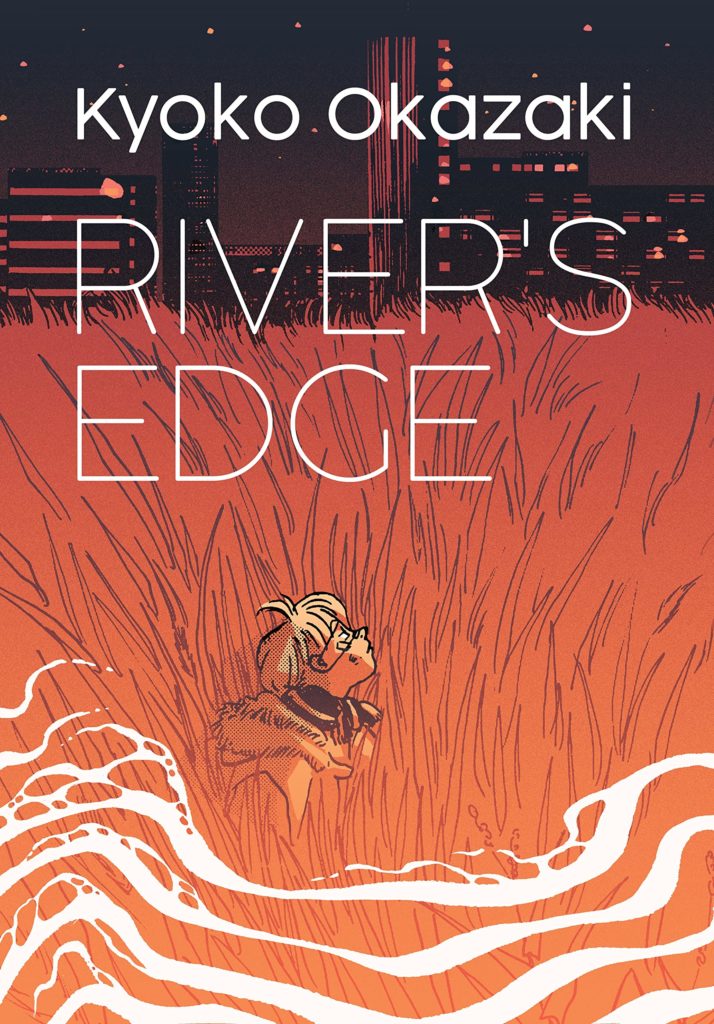
Christopher’s Favourite Book of the Season: River’s Edge, by Kyoko Okazaki, (Kodansha)
Deb’s Favorite Book of the Season: Yakuza’s Bias, by Teki Yatsuda (Kodansha)
[DEB:] The Yakuza’s Bias was just announced as a nominee in the 2024 Eisner Awards in the Best Humor Publication category! Woo!
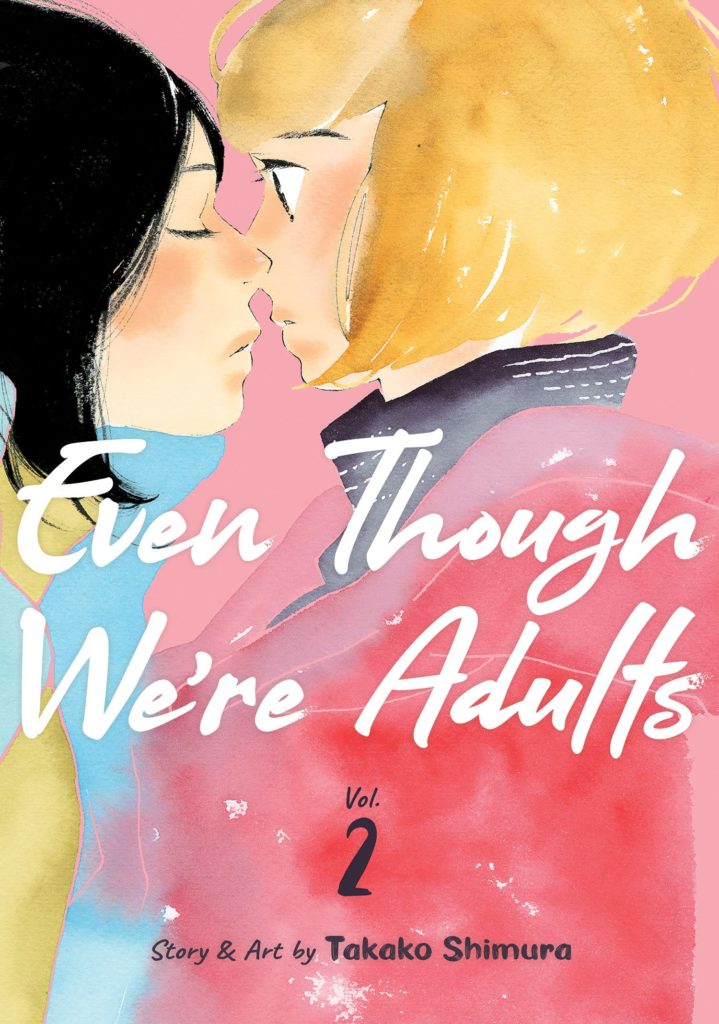
David’s Favorite Book of the Season: Even Though We’re Adults, by Takako Shimura (Seven Seas Entertainment)
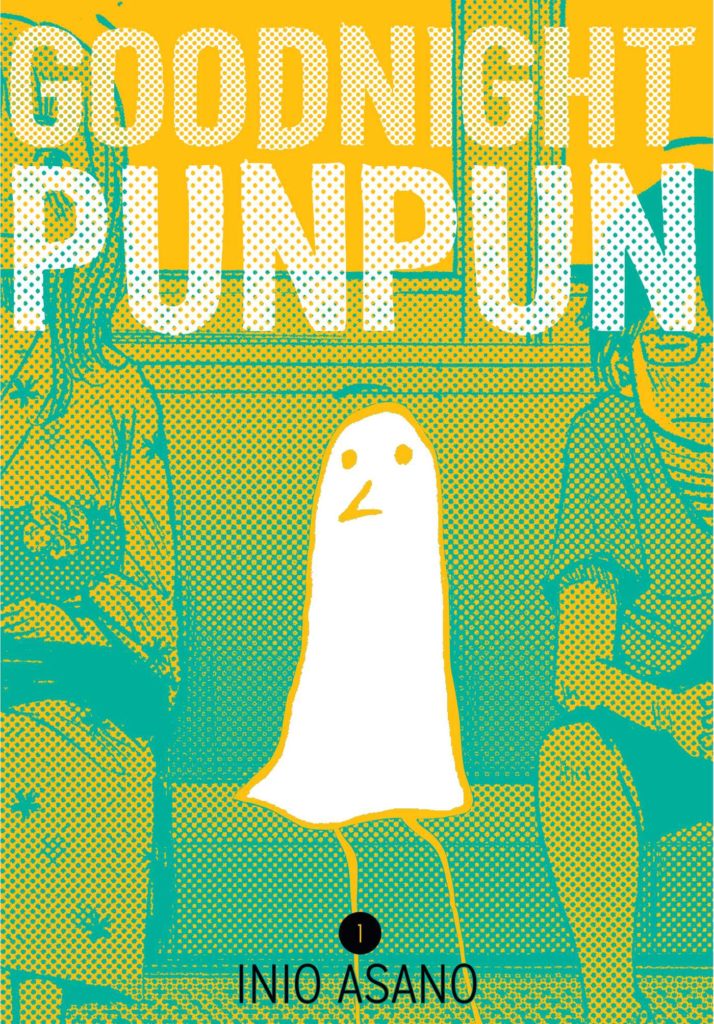
Chip’s Favourite Book of the Season: Goodnight, Pun Pun, by Inio Asano (VIZ Media)
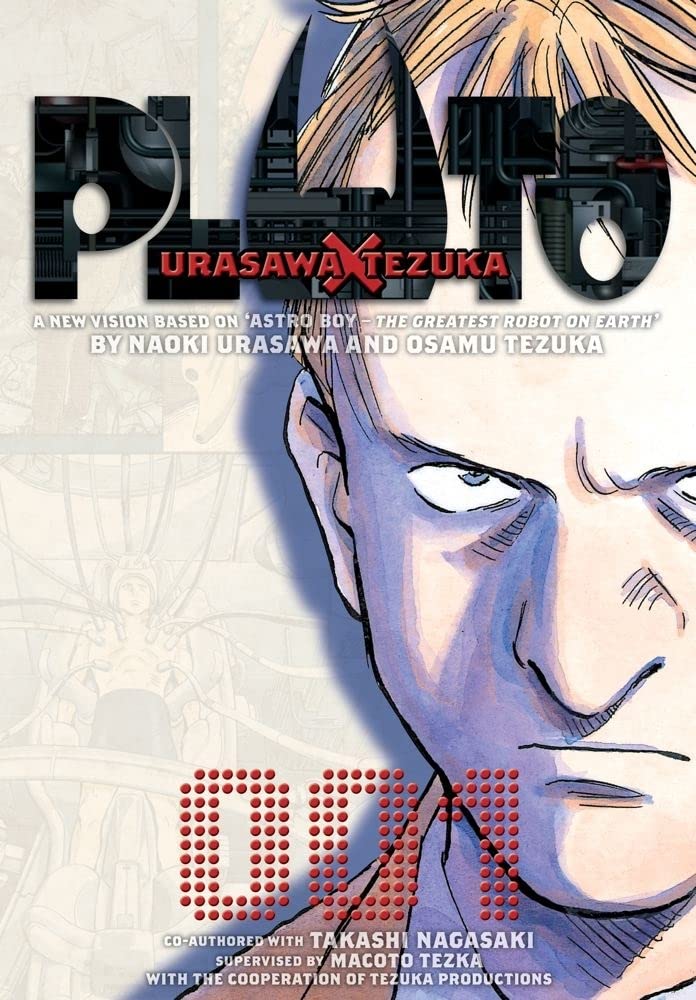
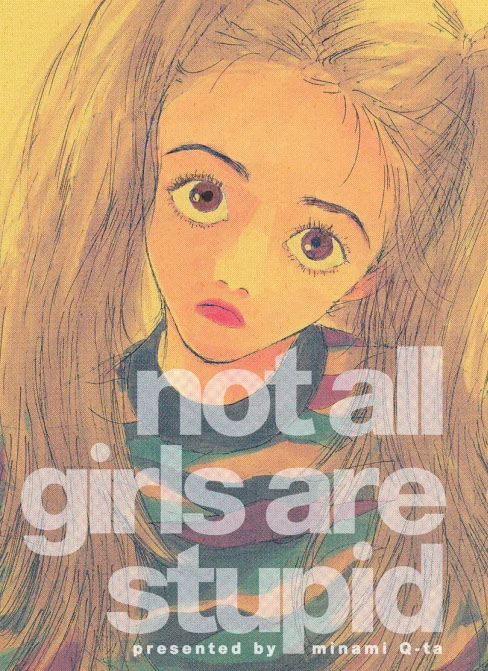

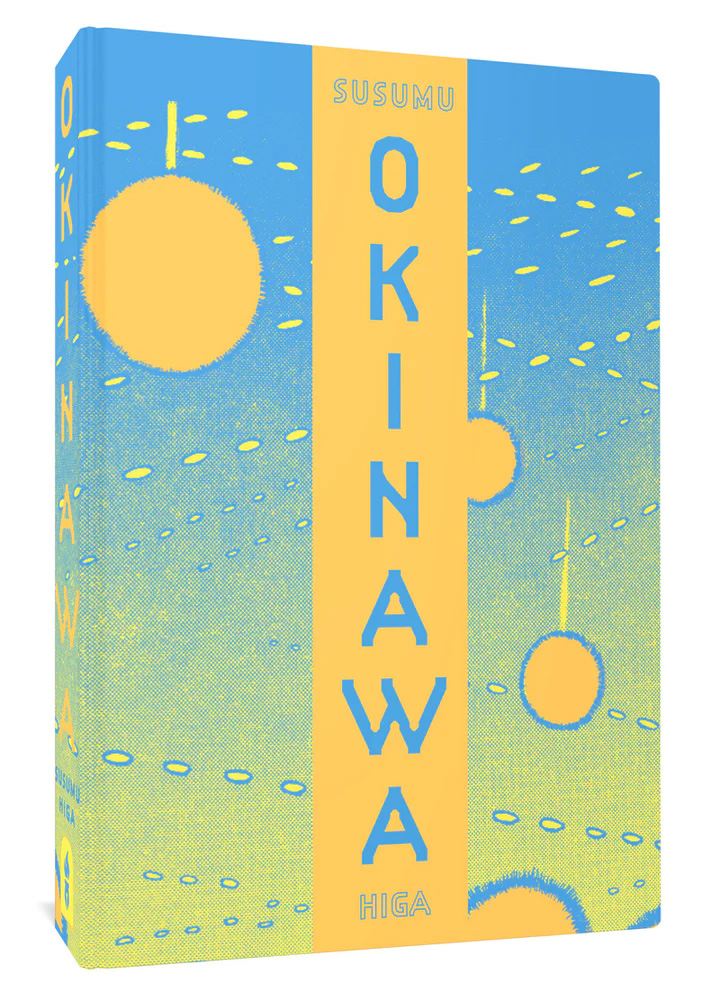
Honorable mentions: Pluto, by Naoki Urasawa; Not All Girls Are Stupid; by Minami Q-Ta; Goodbye, Eri, by Tatsuki Fujimoto; Okinawa, by Susumu Higa

There you go, please share that image. Lol.
Now it’s time for our new category, which David called “Which manga did we read over the course of the season that your opinion has changed on since we talked about it?” In a stunning surprise, all of our changed feelings were very positive, with our enjoyment increasing the more we thought about them:
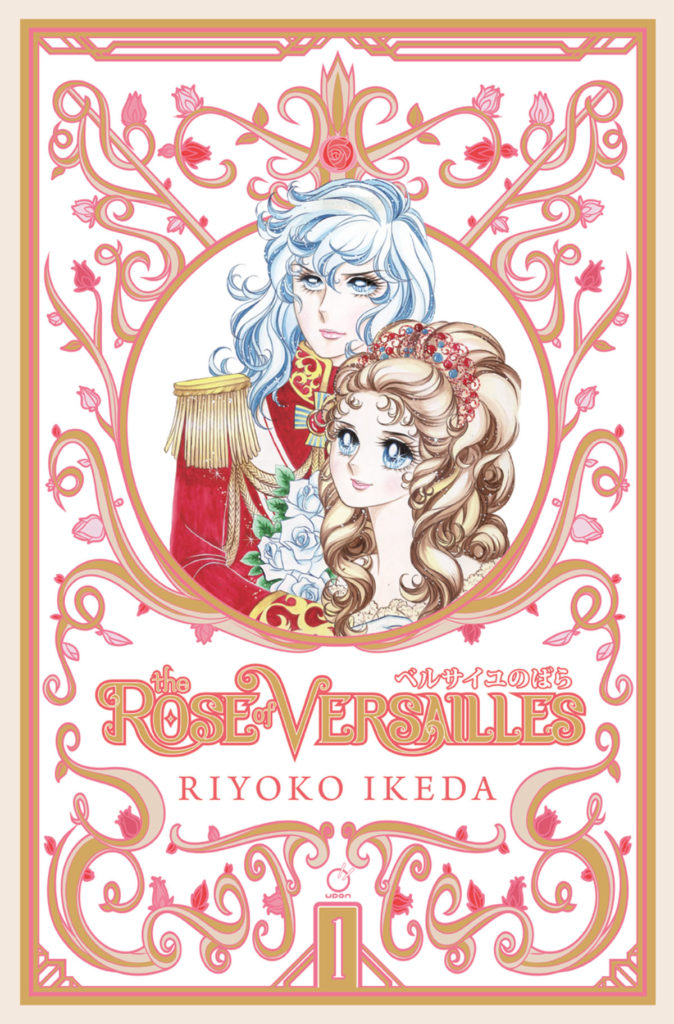
David’s pick for the biggest change is Rose of Versailles, by Riyoko Ikeda (Udon Entertainment)

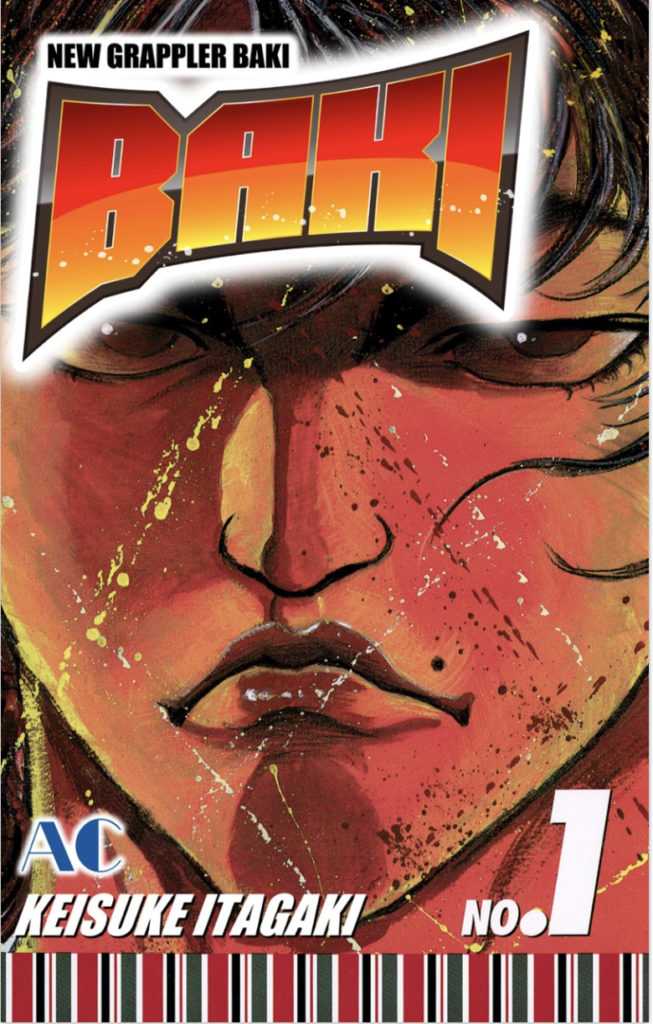
Christopher’s picks are New Grappler Baki, by Keisuke Itagaki (Media-Do International), by AND Real 13, by Takehiko Inoue (VIZ Media)
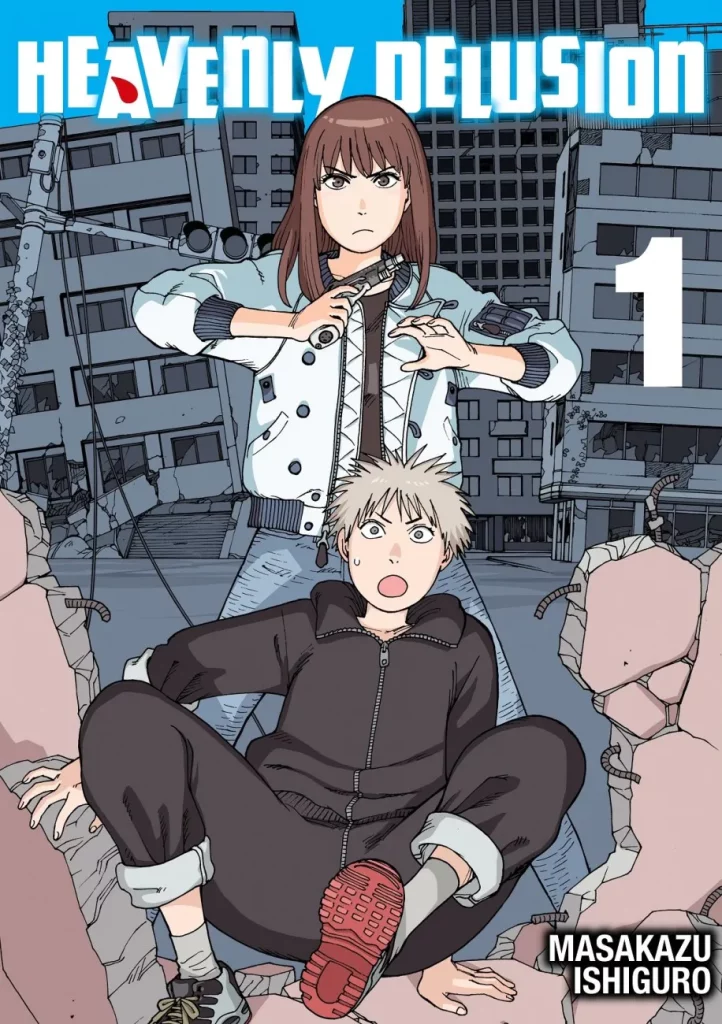
Deb’s pick for the biggest change is Heavenly Delusion, by Masakazu Ishiguro (Denpa Books)
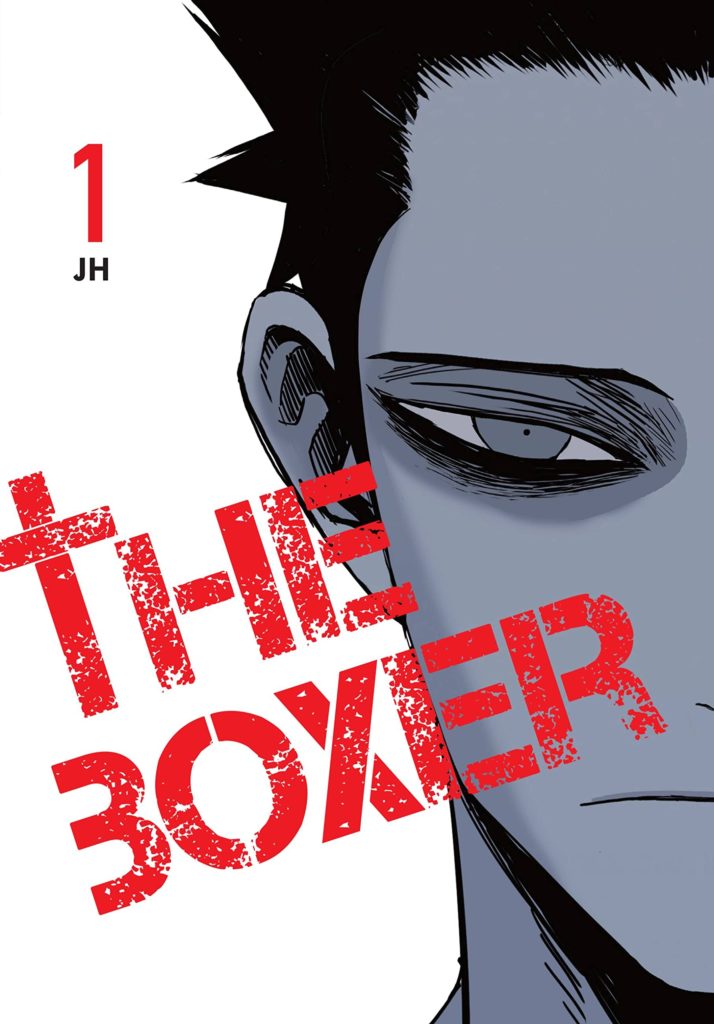
Chip’s official pick is “nothing, his tastes are perfect,” but he’s been thinking a lot about the format of The Boxer, by JH (Ize Press / Yen Press) and webtoons and vertical scrolling comics in general.
Finally, now that all of our episodes have been up for a little while (“a little while”), we can say definitively what our most popular episodes of the season were… And it’s pretty much what I said on the podcast! Not much changed in the last few weeks. Here’s what all of YOU loved the best from Season 4:
#1. Ep. 85: Chainsaw Man Vol. 1, by Tatsuki Fujimoto
#2. Ep. 89: Goodnight PunPun Volume 1, by Inio Asano
#3. Ep. 93: Bleach Vol. 1 & 55, by Tite Kubo
#4. Ep. 94: Pop Team Epic Vol. 1, by Bkub Okawa
#5. Ep. 99: Pluto: Urasawa x Tezuka Vol. 1, by Naoki Urasawa
Honorable Mention:
Ep. 87: The Rose of Versailles Volume 1, by Riyoko Ikeda
For a quick check, these six episodes (plus, oddly, Mob Psycho 100) are our most popular episodes over the course of the entirety of the podcast! Things did slow down a little for downloads when our upload schedule cratered in the last half of 2023, but we’re still really grateful that so many of you are listening every week, and it’s fun watching the numbers go up.
And that’s the stats on season 4! Let’s get into the the chronological, time-stamped show-notes!
**03:23: So, “Josei isn’t a real category in Japan.” This idea was first brought to my attention by friend of the podcast Aki Yanagi, the idea that josei manga, (one of) the Japanese translations for “Women(‘s) manga”, isn’t actually a category of manga in Japan. There are “Women’s Comics,” but they tend to be racy/sexual sorts of titles that are women’s interest, maybe something akin to a Harlequin SuperRomance title in North America? Usually a little racier than that. Titles we’ve covered on the podcast that come from “Women’s Comics” magazines include The Untouchable Midori-kun and Yakuza Lover, for example.
But josei manga, as we’ve come to think of it in the west, isn’t exactly a publishing category in Japan. Several of our josei titles actually ran in “general-interest” seinen magazines, women’s magazines, fashion magazines, etc.
But it’s really clear to me that there’s a space for “grown-up shojo” manga that is carved out any time an author is brave enough to do so, creators like Kyoko Okazaki, Moyoco Anno, Minami Q-Ta, Asamiko Nakamura, Akiko Higashimura, Akino Kondoh, or dozens and dozens of other great creators whose work will hopefully be translated soon. I look at magazines like Shodensha’s FEEL YOUNG or Flowers from Shogakukan, and those ‘feel’ like josei manga to me… Though it may be classified differently in Japan.

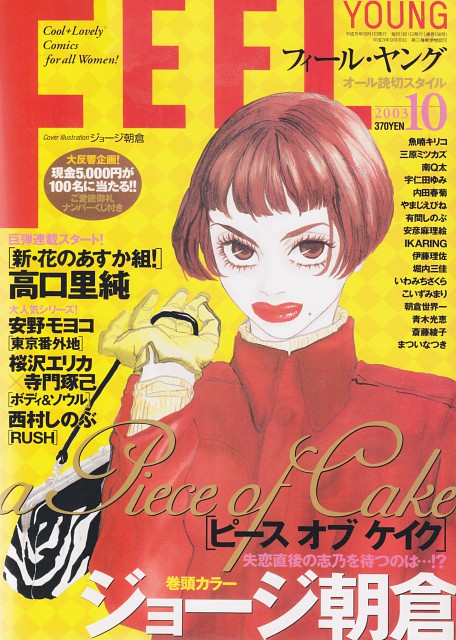
One of our regular commenters, Eric Henwood-Greer, has been leading the charge this season in our comments section at mangasplaining.com for the discussion of what josei manga is and whether or not it exists… We started talking about it in the comments for our episode on The Untouchable Midori-Kun this season, and I think he really illuminated his points (and those of his compatriots) really well:
“In regards to the whole josei/ladies comic, WTF, category thing. I’m not an expert, but I am good friends with someone who is (she is a member of the four woman group toshonoie who have put out by now well over a dozen beautiful books in Japan devoted to shojo history, etc. … she said the readers she knows who read Flowers and Feel Young … will usually just casually call them shojo magazines, while it is clear that they are aimed primarily for young adults and older.”
– Eric Henwood Greer, Mangasplaining Comments
There’s so much more to Eric’s comments here, and his follow-up comments on the Not All Girls Are Stupid episode as well. If this is a subject that interests you I highly suggest going to check that out. Also, feel free to add your comments about this topic below, and hopefully Eric will jump into the fray.
7:30: Just an end of Season 4 shout-out to The Beguiling Books & Art in Toronto, Canada, for offering support for the podcast in its early days, and its continued job being a great comic book store. Shop online at https://www.beguilingbooks.com/ or visit them in store.
23:30: Turns out we actually posted this image before! When I googled “Inio Asano Pun Pun Tattoo at TCAF”, I found this image on Mangasplaining, in the Goodnight Pun Pun episode show notes. Lol.
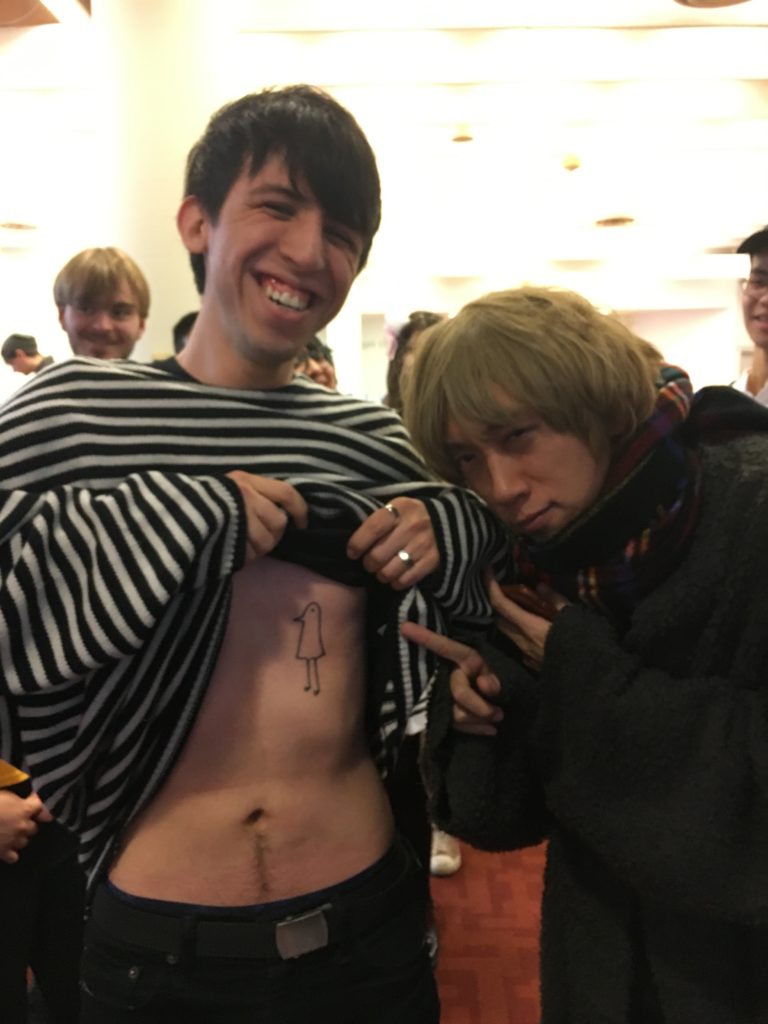
25:00: Yeah, that’s something that’s… a bit of a downer in the format of the show. Sometimes the story changes pretty dramatically after the first volume. In particular, a series of wars in the Middle East and technology created to fight them show up in Pluto, and are at the center of Osamu Tezuka’s original Astro Boy story that inspired the series, which becomes a more charged read depending on what’s going on in the world.
31:27: So this is an interesting one. Classic X-Men is one of several series from Marvel comics that seek to go backwards in time, and insert “new” stories that take place alongside or in between older stories. Running intermittently from 1983 to 1995, the series started off as a straightforward reprint, but later issues would include new pages written by series-writer Chris Claremont and drawn by new artists, that would more closely tie the works to contemporary X-Men releases.
But most directly relevant, each issue would also have newly-commissioned backup stories that would take place around the time of the reprinted issues, offering “unseen stories from the history of the X-Men.” A treat for fans and continuity wonks both.
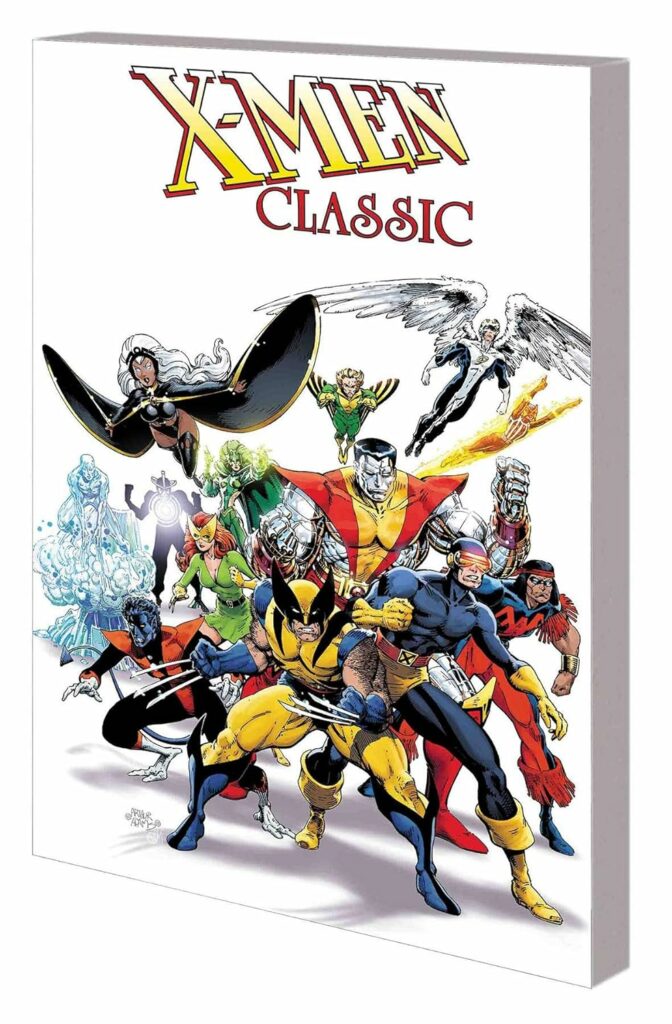
Which brings us to Riyoko Ikeda’s The Rose of Versailles. That series wrapped up in 1973, as, after the deaths of lead characters Oscar and Andre (spoilers) the readership was simply too sad to keep reading, and sales dropped through the floor. However, in 2013 Ikeda-sensei was invited to write a column in the original serializing magazine Margaret, and instead of a column she asked if she could write new Rose of Versailles stories that she had meant to create at the time when the series was canceled. The revival chapters were serialized from 2013-2018, and will be collected in the forthcoming two volume collection from UDON, Rose of Versailles Stories Volume 1 & 2.
Sadly I can’t share the cover for that one with you yet, but it’s very nice and fits perfectly with the design of the first volumes…
Oh what the heck, you can have a TINY sneak peak:

More info coming very soon, probably at Comic-Con or Anime Expo.
31:55: Fist of the North Star has a fake additional ending? Actually based on my research, it might have two… See the “first half” ends with the climactic battle between Ken and Raoh, with Ken, the good-guy, winning. All is right in the world, and this is what happens in Volume 10 of the current VIZ editions of Fist of the North Star.
But thanks to the success of the film Rocky in the early ’80s, the animated film adaptation of Fist of the North Star had Ken… losing to Raoh! This tested awfully with audiences, people were bummed, but it gave everyone a sense of finality… But only in Japan.
In America, a new ending was animated which ends in the final fight being a ‘draw’ between Ken and Raoh. This is the first fake ending, and isn’t considered cannon.
However, then there’s a second half to the manga (volume 11+ in the VIZ Media editions) which brings back Kenshiro and the gang to fight a new empire and other evil counterparts to the practitioners of his fighting style. It sort of… Never ends, as far as I can tell. Like it ends, but the end of the series is left open for infinite sequels in Japan (of which it got a couple and a few prequels and side-stories too). People don’t seem to dig those volumes as much either.
Now I’m not really much of a fan of this series, so if I’ve gotten it wrong please let me know in the comments and I’ll see about updating that here at some point.
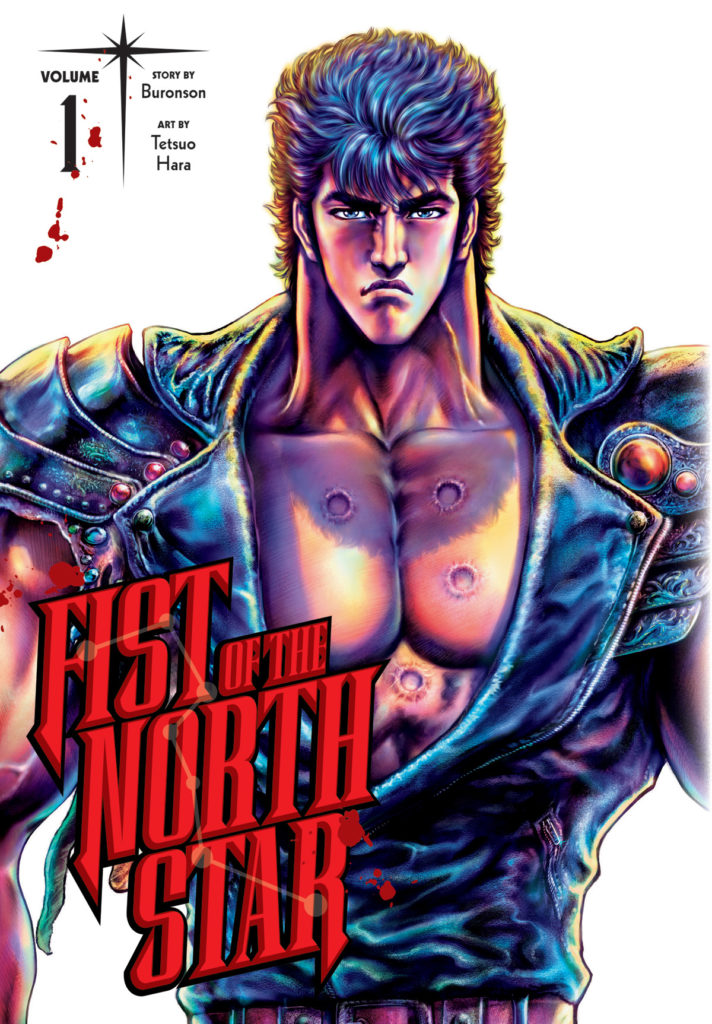
41:00: Manga sizes have been standardized to a pretty high degree in North America, with the “Tokyopop size” (also known as the VIZ Shonen Jump size) that’s about 13cm x 19cm making up most of the books released in English. Sized in between the two primary Japanese manga book sizes, the North American size allows for reprinting of works with different aspect ratios.
It’s worth noting that Japanese manga generally adhere to metric paper sizes, so the collected editions in Japan are usually the more-narrow (and smaller) B6 size of 12.8cm x 18.2cm, and the more-wide (and slightly larger) A5 size (14.8cm x 21cm). Japanese Shonen Jump size is even smaller, with the collections measuring just 10.6cm by 17.3cm. Here’s what the Japanese and American editions of Bakuman 15 look like next to each other for reference:
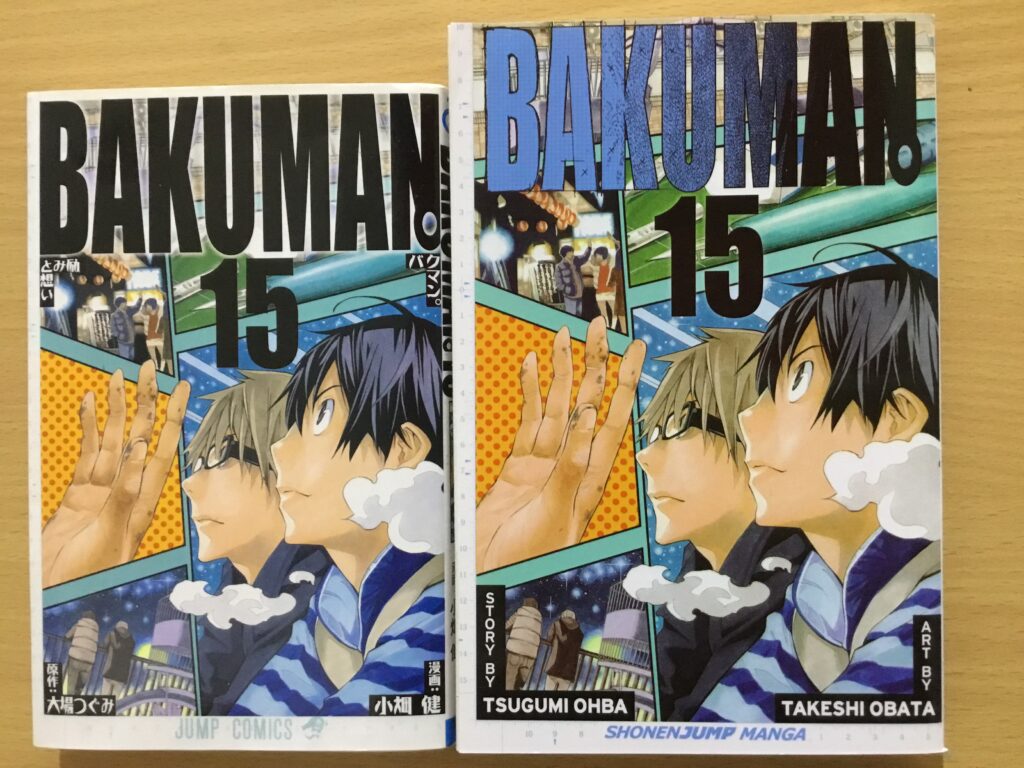
That image courtesy of this website: https://immortalliumblog.com/an-overview-of-tankobon-and-other-interesting-manga-formats/
As for the DC Comics reprints we mention, launched just this year DC Comics has released a line of “DC Compact Comics”, measuring 5.5” x 8.5”, or 14cm x 21.6cm, basically A5 size but with an American “trade paperback” standardization flare, and just a bit bigger across the board than manga titles.
It’s funny that the marketing likened them to “airport paperbacks” in terms of format, rather than manga, even though manga was dominating the bestseller lists at the time. It’s also funny that they didn’t mention that they got the idea from their own licensor, URBAN COMICS in France, who has created a brilliant and easily identifiable trade dress for their DC (and Marvel) comics. We got to see the whole line in Angouleme this year:

Anyhow, they’ve also reduced the price significantly, to the $10-$15 range for thicker books (rather than $15-$20+ for thinner collections) here in the U.S., and are rolling out the titles around one per month this year. Hope it works for them, I’ve been hoping for something like this for years!
P.S.: We also ran into Chip’s French editor at Angouleme, and he provided these photos for the blog. We’d be remiss in not sharing them:
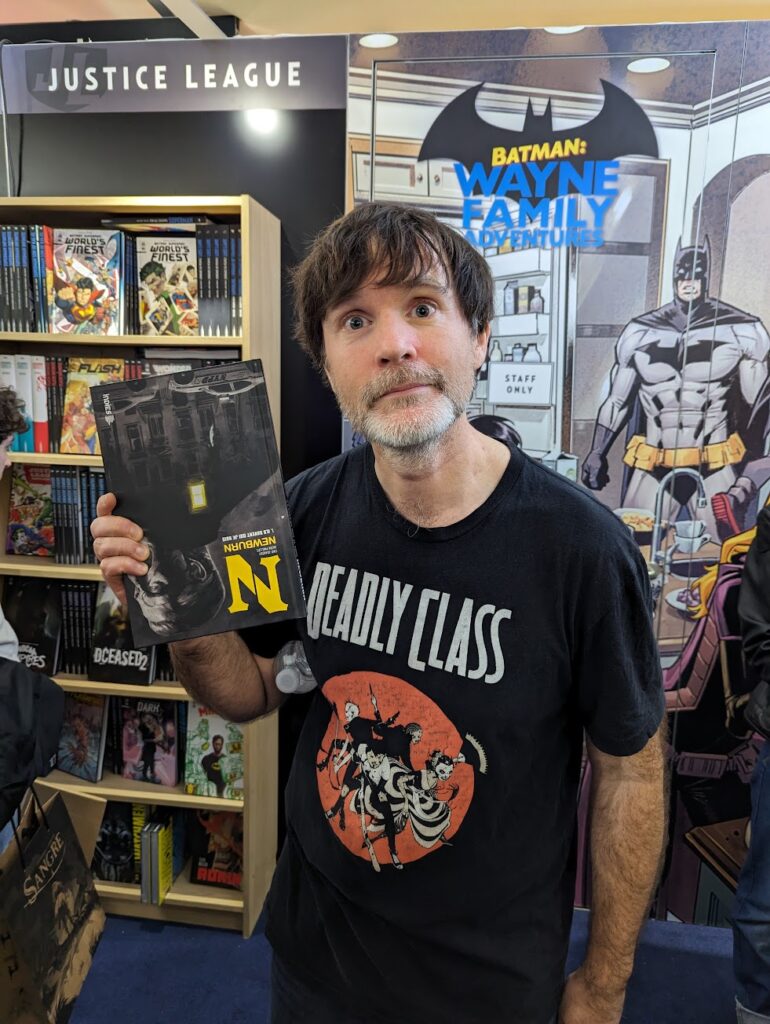
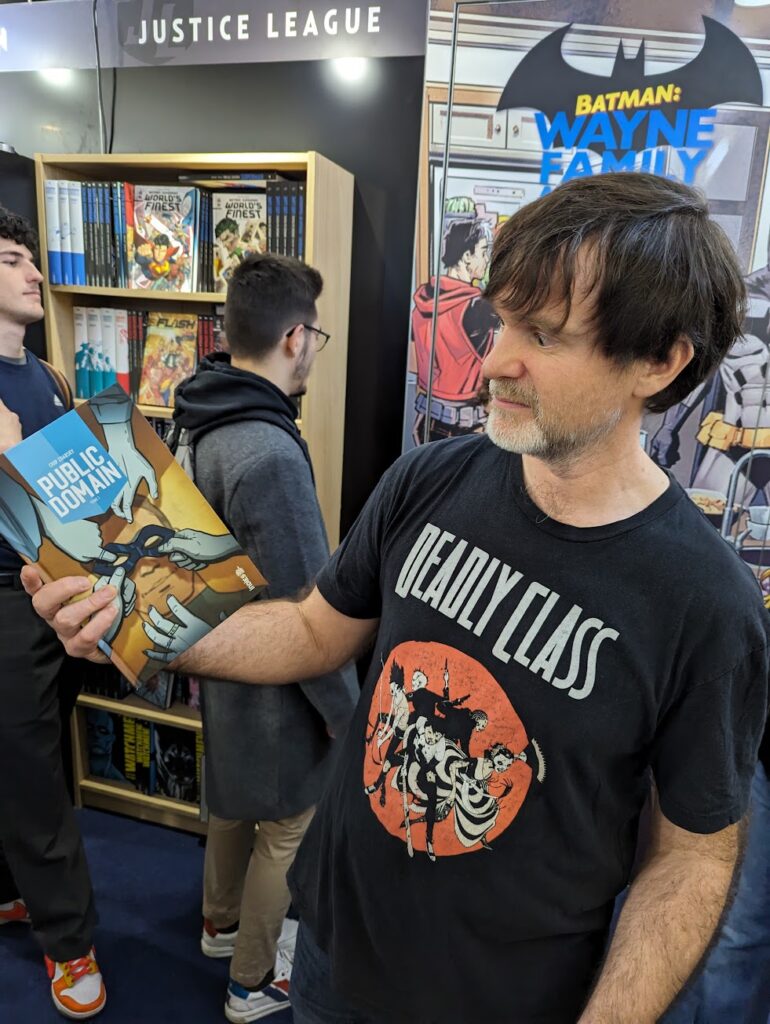
43:00: “Paper waste, full sheet, folding it down into a comic book.” Yeah, this is so far outside of the scope of Mangasplaining that you’re just getting a link. SORRY. https://clearimageprinting.com/inc/2016/03/21/what-is-a-print-signature-an-imposition-and-a-spread/
43:20: Shout-out to former Tokyopop editor Lillian Diaz-Pryzbyl, who personally explained the Tokyopop manga size thing to me, and was one of the originators of that decision from her time at Tokyopop.
Anyway, all of this is WAY, way off track.
46:53: Bryan is very tall, yes. About 6’3” I think? He’s a couple cm taller than me for sure. And yeah, Scott Pilgrim is deliberately published in that “manga size,” because he always knew that manga fans were gonna be the ones that gravitated to his work. Don’t underestimate format, and don’t underestimate people’s love of print in North America.
49:30: Year in Review:
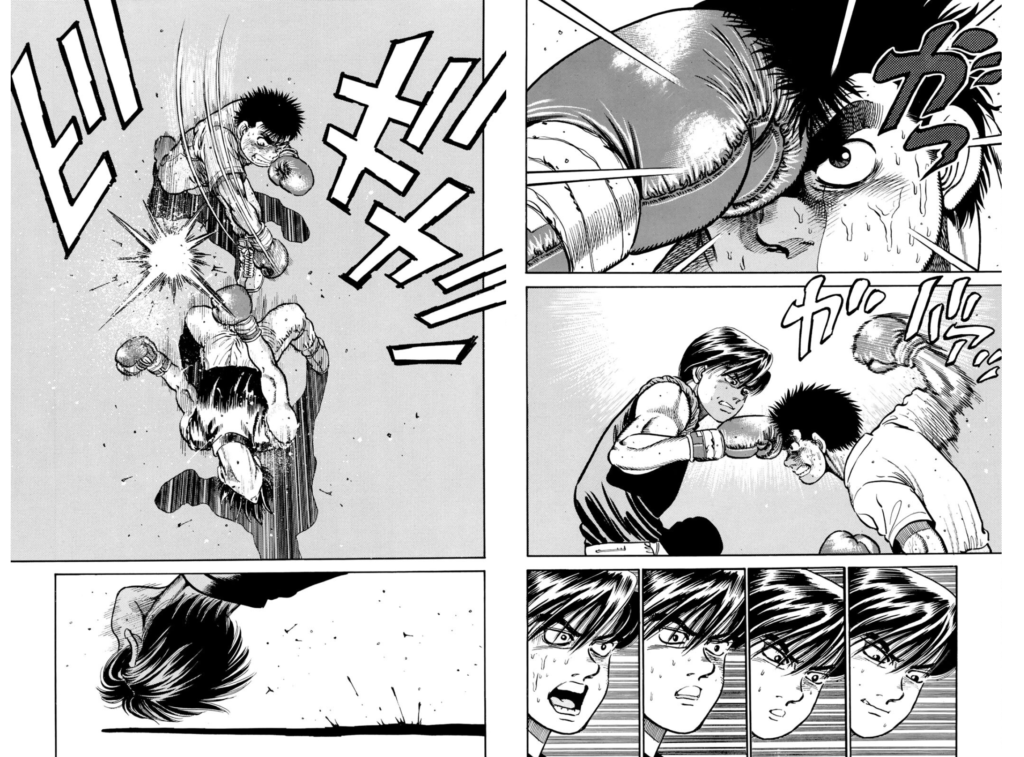
Hajime no Ippo is finally in English! We did it! You can read it online on K-Manga, here: https://kmanga.kodansha.com/title/10071/episode/347587
Funny enough, as someone who lives in Asia, I actually couldn’t access that link. I definitely didn’t get a VPN to access it.

The manga Kingdom iis a 795+ chapter long, 71+ volume series by Yasuhisa Hara and published by Shueisha. It’s about the history of China, and it’s by a Japanese creator (though widely loved in China). It is currently available in every major manga market in the world EXCEPT America.
It is the subject of an intense campaign by fans to spam every U.S. publisher with emails and tweets, begging them to license and publish it. Which is like, funny, and also sad. And yes, it would be funnier if it was literally never released, but you’d think they’d throw it up on Jump+ or something…? But if they haven’t yet…
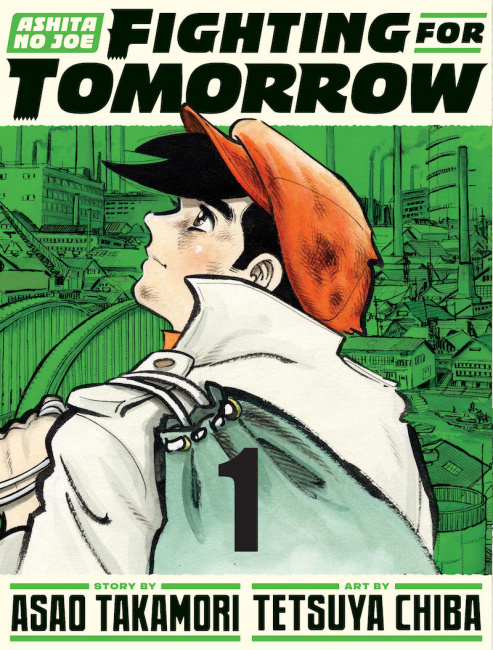
But yeah, our next golden goose manga series Ashita no Joe, well it got announced between recording and… now. It’s coming in print from Kodansha in massive omnibus editions, with the first volume coming in December.
51:15: We all put out work this year!
The first MSX Manga, Okinawa, was released by Fantagraphics!
Chip’s first volume of Public Domain came out this year and it was deeply influenced by all the manga we made him read (plus the end of his Daredevil run and the beginning of his Batman run).
David released new comics too with his pals, self-publishing on itch.io so go buy them!
Deb got her Twitter account back after some lockout f**kery, and has been tweeting up a storm, and so much more behind the scenes too. Go give her a follow.
It’s been a hell of a year! Thank you so much for listening, reading along, commenting, and being VERY PATIENT while we finished up this year. We’re super excited for the next season.
<3
57:18: THE BREAK
We’re picking Books!
Alright! Here’s where we pick the next batch of books for Season 5. Our #1 book is already picked, with Frederick Schodt’s Manga! Manga! The World of Japanese Comics, a PROSE book, kicking off our season. So what’s number two through number four then? Well…
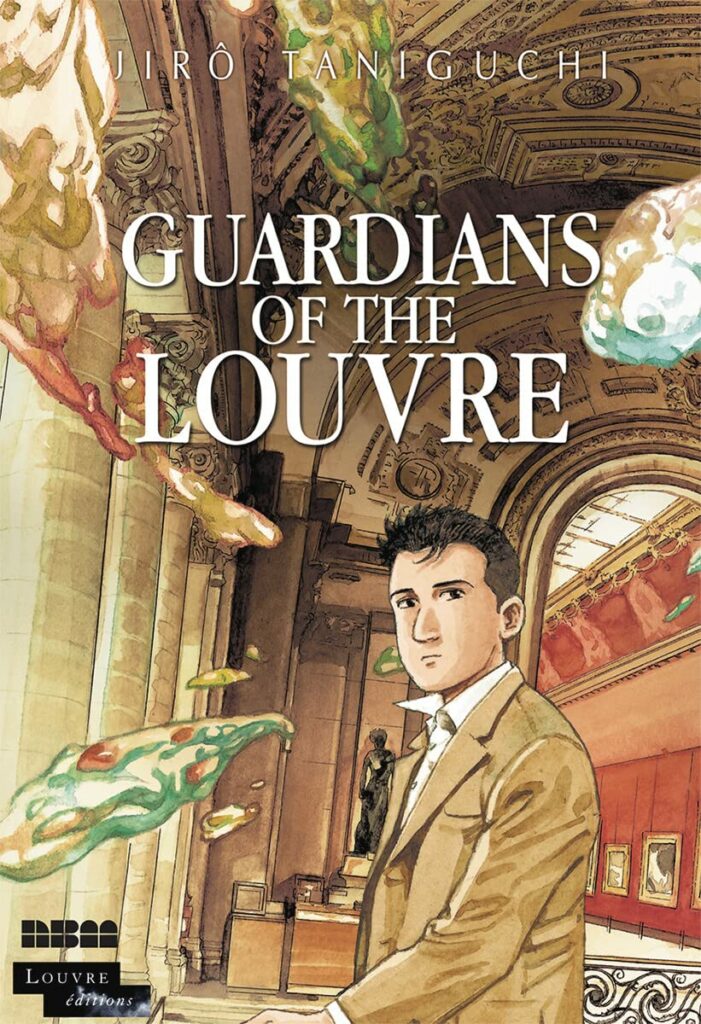
#2: David has a secret chart that he’s made which has all of the books he wants to pick this season. He is making Chip pick at random, and his first pick? The unique manga/BD hybrid Guardians of the Louvre, by Jiro Taniguchi from NBM Graphic Novels.
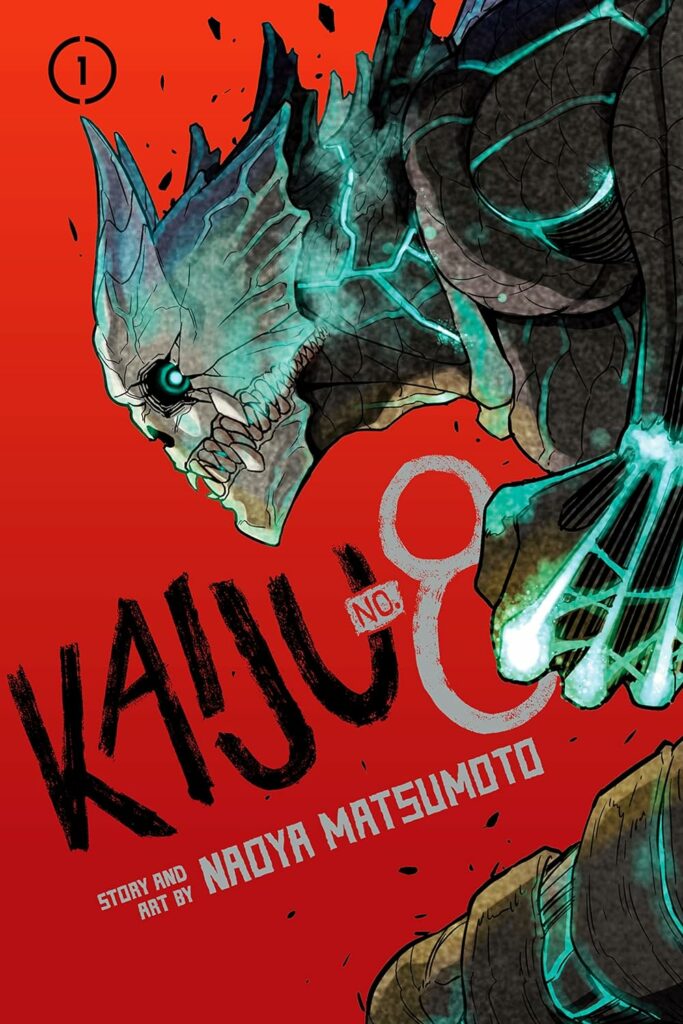
#3: Deb picks Shonen Jump’s newest hit adventure manga, Kaiju No.8, by Naoya Matsumoto, about a man who works in the kaiju clean-up squad but has ambitions to join the defense forces that fight giant monsters. But his fortunes change when he develops a monstrous alter ego.
[DEB:] The Kaiju No. 8 anime is now airing on Crunchyroll — go check it out! Here’s a trailer:

#4: Christopher picks the hockey action manga Dogsred, also from Shonen Jump but definitely not a “hit” as it’s only digital right now, by Golden Kamuy author Noda Satoru. Did Chip mention that he hates hockey? I’m sure that won’t come to bear on the episode.
You can read Dogsred now on VIZ Media’s Shonen Jump app/website.
Just as an update, we’re moving to an every-other-week schedule to give me more time on the show notes and Deb more time to edit. So we have a special interview in two weeks (from today), then two weeks later we’ll kick off season 5 with Manga! Manga! The World of Japanese Comics by Frederik Schodt!
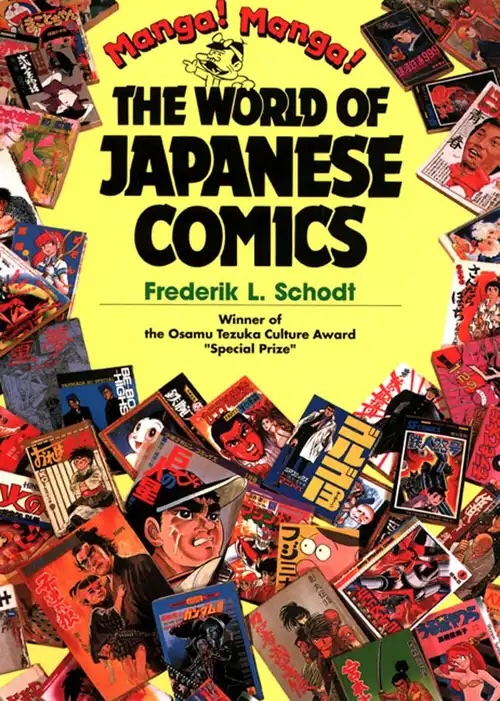
We’re already really ahead on recording, and I’m working on getting ahead on notes too.
SHOUT-OUTS!
Christopher: I shout-out all of our commenters, on various media. So that’s you, reading this. Leave a comment, let us know what you’re reading, what you’re thinking about manga these days. We’re on Twitter, Instagram, Bluesky and Facebook for social, and then there’s always our Website (you’re on it) and Substack too!
You can also, uh, pre-order our upcoming manga, too?
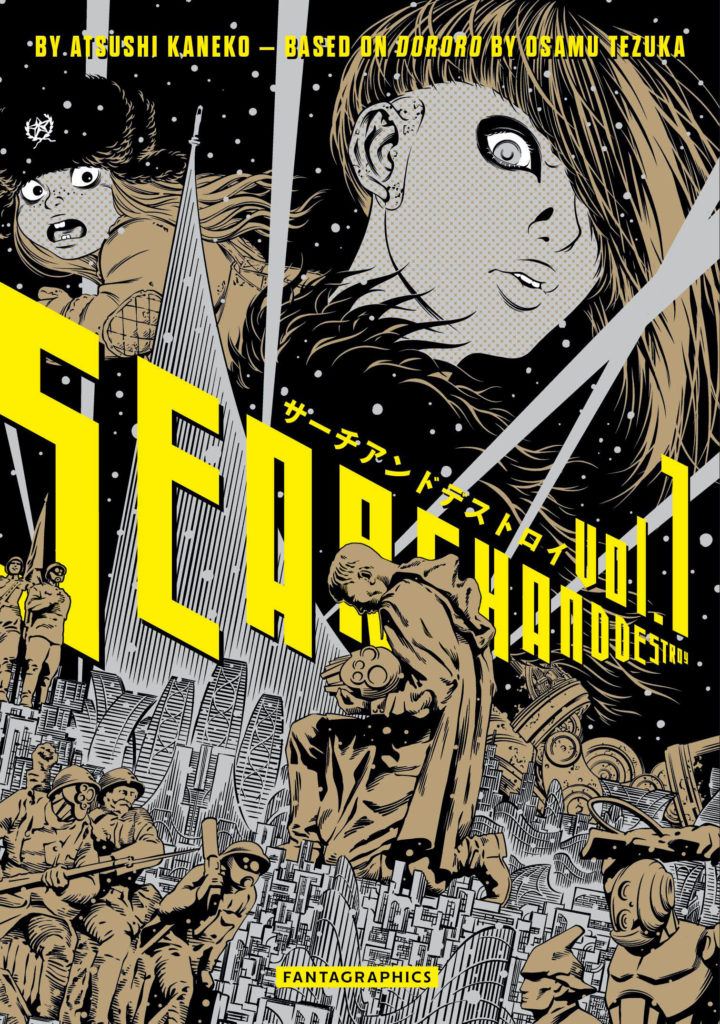
Pre-Order: https://www.amazon.com/Search-Destroy-Vol/dp/1683969324/
Deb shouts out Eleceed, a webcomic on WEBTOON about a super-powered guy who turns into a fat cat and ends up being a mentor to a teen who doesn’t know that he has special powers. Besides having some funny cat funnies, it’s also full of action, so it’s kind of like Korean webtoon X-Men?
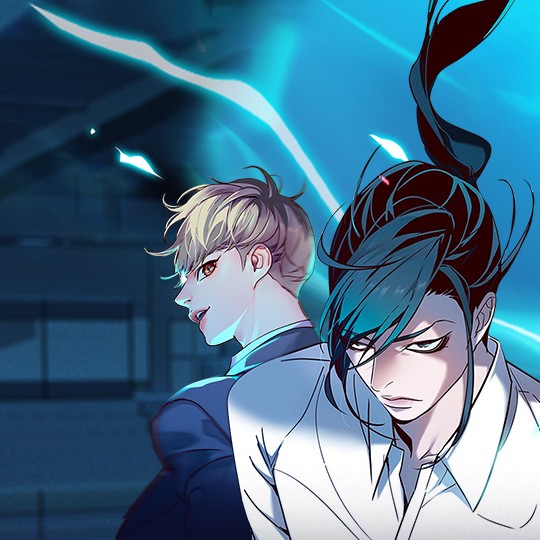
Here’s the description:
“Jiwoo is a kind-hearted young man who harnesses the lightning quick reflexes of a cat to secretly make the world a better place – one saved little child or foster pet at a time. Kayden is a secret agent on the run, who finds himself stuck in the body of a…um…decidedly fat old fluffy cat. Together, armed with Jiwoo’s super powers and Kayden’s uber-smarts, they’re out to fight those forces who would let evil rule this world. That is, if they can stand each other long enough to get the job done.”
Here’s some images Deb provided:




Read Eleceed on WEBTOON: https://www.webtoons.com/en/action/eleceed/episode-1/viewer?title_no=1571&episode_no=1
David shouts out the film Onibaba, directed by Keirito Shinto. A classic.
Chip shouts out the video game Spider-Man 2 for the PlayStation 5, because he designed a costume that’s in it! I don’t think he’s played it yet. 🙁 It did convince me to finally buy Spider-Man 1 for the Playstation though, and I’m slowly playing it and will work my way through, then play Miles Morales, and then jump to Spider-Man 2, sometime next year.
And that’s this week in Mangasplaining! This episode is also available wherever you get your podcasts, so please subscribe and leave a review, so others can discover our show.
Also, if you’d like to get the latest episode delivered straight to your inbox along with exclusive interviews, articles and new chapters of manga you can’t read anywhere else, subscribe to our Substack newsletter. See what you’re missing at Mangasplaining Extra!
In 2 weeks on Mangasplaining:
Next time out, we actually have a special interview with Robin Brenner, president of the Graphic Novel Roundable at the American Library Association, about how graphic novels and manga have come a long, long way in the library space.
Thanks so much for listening! Please support your local comic and manga specialty shop when purchasing these books, and you can find one near you at comicshoplocator.com. You can also check your local library for print and digital lending options, they have TONS of manga! Finally, thanks to D.A.D.S. for their musical accompaniment for this episode.
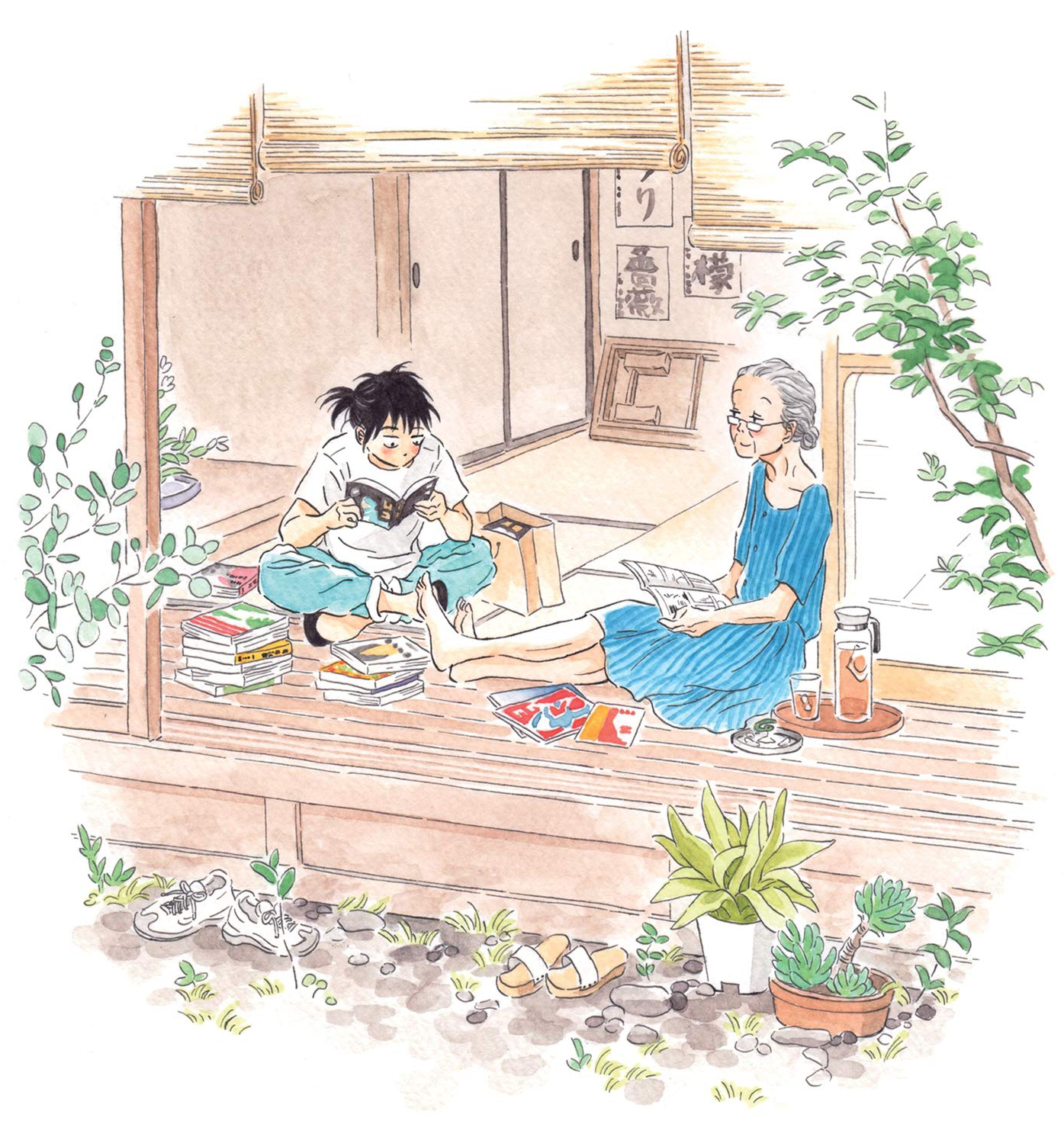
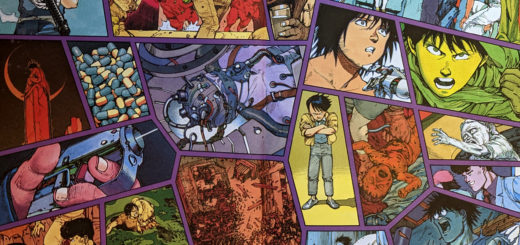
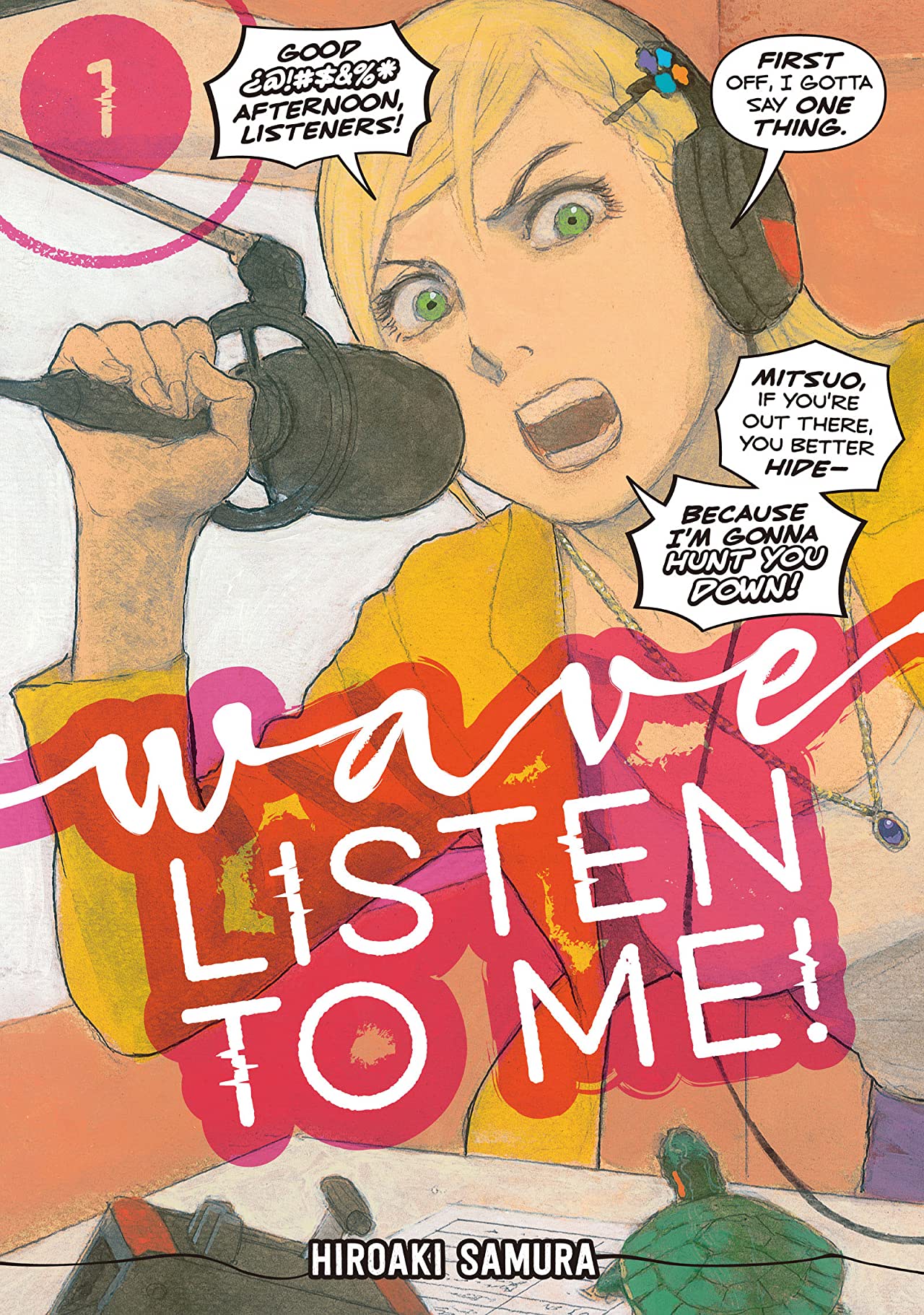
This is my vote for an episode of Momsplaining.
Ha, I appreciate the shout out in the notes! I’m sorry for listening this so long after it was released–but I have lost track (including that I presented at a conference in Chicago about 1970s shojo manga. It went… well, though we had about 20 in the audience sigh)
“But it’s really clear to me that there’s a space for “grown-up shojo” manga ” And I think this is why the josei term IS important among Western fans, even if I’ve realized it really isn’t a Japanese category (or maybe demographic, is a better term.)
This season had a great mix of titles, and I loved that Chris chose River’s Edge. Wasn’t keen about the Euphoria comparison but… he has a point. It certainly would be a title I’d give a non-manga reader.
I’m Jealous of Chris getting to see an exhibition of Ikeda’s Rose of Versailles art. One thing that always occurs to me about those 1970s works is that they had no idea (this was especially true with shoujo) that the art would eventually be shrunk into tankoubon form, They were meant to to be read at the magazine size (Denpa has said their new edition of Moto Hagio’s They Were 11–whenever it comes out, will use the deluxe magazine size that the anniversary edition in Japan did.)
I’m excited for the Rose of Versailles “Episodes..” release, though already the fifth volume of Rose of Versailles (Oscar with vampires!) from 1984 has been released from Udon and is, fun but not great. I really wish Udon would tackle Ikeda’s self-claimed masterpiece, Orpheus’ Window, which is at her peak art and story wise, even if it has redundant aspects (Russian revolution! Crossdresser–sorta trans?–lead!) It had a beautiful French release some years back.
And… I wanted to add, just how joyous this podcast is for me, every month (or week or whenever). I look forward to hearing the take on Manga! Manga! which is basically how, as a kid, I got into manga. Bravo, all of you.With Deb’s love of cat manga, I’m surprised she’s never talked about Hagio’s ‘Lil Leo?